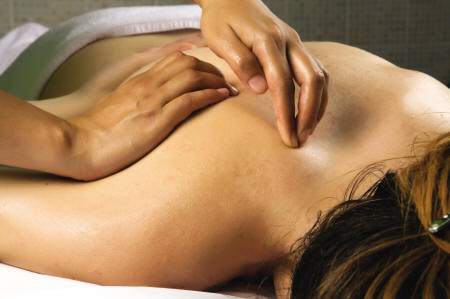
Michael's Hands
Friction
| By: Michael Manion | Viewed: 1/8/2026 |
Topics/Keywords: #Friction #SwedishMassage | Page Views: 5094 |
| All about the Friction movement of Swedish Massage. | |||
What is Friction?

Friction, in English, means to rub one object or surface against another. It is from the Old French word taken from the Latin frictio, which basically means to rub. One of the five basic Swedish massage strokes, friction is the rubbing of the area or muscles one against or over the other. It has been touted as one of the most important massage manipulations which influences circulation, nutrition and the cellular functions of the various areas to which it is applied.
Friction accomplishes the rubbing of tissues against each other, affecting their separation and the breakdown of inflammatory products, which can organize and cause adhesions.
Inflammation is the body's reaction to an irritant, and can be brought on by infection or an attack against an area of the body by bacteria, germs or injury. Inflammation then acts to lessen mobility, which creates a more stable environment for healing. Inflammation thus restricts movement and lessens oxygenation to the injured area.
Adhesions can occur when inflammation and injury may have produced new tissue in order to mend the damaged tissue. This new tissue may bind together the various muscles or areas. In this healing process, lactic acid is exuded by the injured tissue to repair it and because the various muscles can overlap each other, they can become glued together by the lactic acid. In joint problems, the application of friction is undaunted and unparalleled in its importance, especially to prevent adhesions and therefore stiffness of the joints. Also, after adhesions have been formed, it can assist in breaking them up and returning range of motion to the area as well as much needed oxygen and blood.
The Best Applications for Friction
So, friction works well on various inflamed joint diseases and swollen muscles of all kinds. The rubbing action brings much-needed blood, and the muscles can become looser and more mobile. This is the stroke that can best break up adhesions and allow the restoration of a full range of motion. In the case of hard-resistant scars, massage using transverse friction with oil is best advised.
Friction can be useful in the case of fractures of the bones of the body. Although we would not want to see this performed while the bone is mending, it can be helpful in small amounts if the area is in a cast. In this case, light friction above and below the fracture helps to stimulate the absorption of the products of stasis. After the cast is removed, light friction on the affected area can be applied with care.
Friction can be added to the treatment of sprains as soon as harder pressure can be applied. The greatest value of friction for sprains is where stiffness of joints is involved. Chronic synovitis is inflammation due to repeated injury to the synovial joints of the body. We can apply deep friction along with other methods to alleviate some of the inflammation.
Friction is also useful with many of the foot deformities such as flat-foot, where we apply deep friction over the tendon sheaths, the tarsal and ankle joints and the soft tissue of the foot. A nerve massage can be given which includes nerve friction. This applies to many nerve lesions such as neuralgia and neuritis. In these cases, we want to perform friction, with other methods of massage, over the nerve trunk involved and its area of distribution. This must not be given with too much force. We also want to massage the adhesions from the muscle inflammation that is irritating the nerve.
Sciatica is the most common of the neuritis-type conditions. The condition may be caused by diseases in that area of the back and hip, or simply from poor posture. Friction around the sacrum, taking care near the trunk of the sciatic nerve, can reduce adhesions and inflammation.
Friction can relieve headaches caused by rheumatic conditions by its use in massaging the neck and shoulders. Lower back pain caused by conditions such as lumbago or the lumbar region of the back may involve myositis-- inflamed muscles or neuralgia--inflamed nerves. Treatment is very specific and includes other massage methods along with friction along the vertebral column to alleviate swelling and inflammation.
These are just some of the many wonderful and pain-relieving benefits to be experienced through the use of friction.
©1998-2026 Michael Manion
All Rights Reserved
